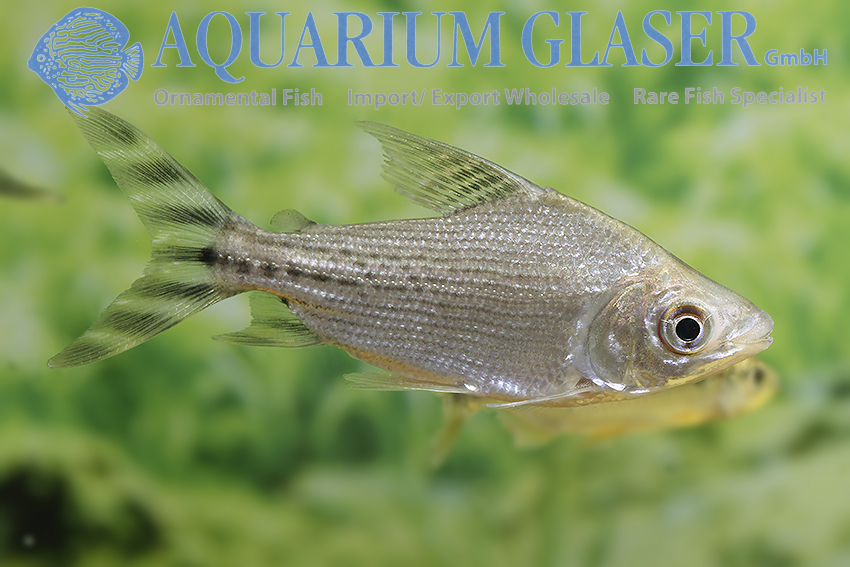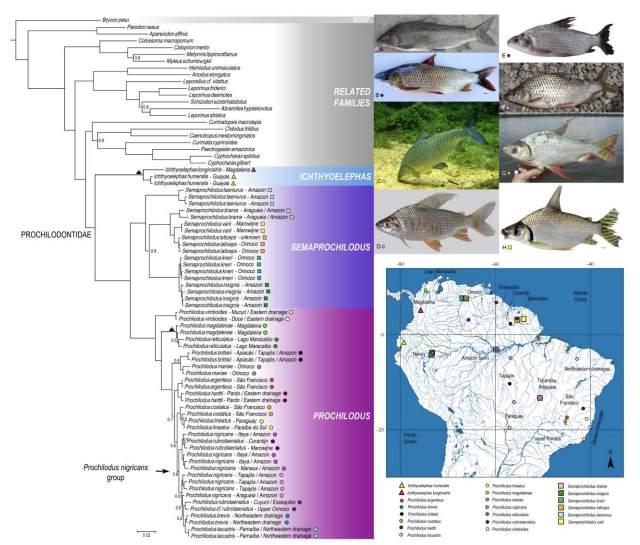Flagtail Prochilodus, red fin and yellow fin
- Thread starter thebiggerthebetter
- Start date
You are using an out of date browser. It may not display this or other websites correctly.
You should upgrade or use an alternative browser.
You should upgrade or use an alternative browser.
A helpful conversation we had with a peer on YT:
@Constantine_Cvl8 Is it true that yellow-tails grow slower than red-tails?
TBTB They grow to significantly smaller size. The rate of their relative growth can't be too different, but it's a guess. We raised both, can't say I recall an obvious difference.
@Constantine_Cvl8 do you know what specific species the yellow-tails are identified as ?
TBTB If we don't touch on this in the thread, then I probably don't. I probably never bothered with it because I thought there was no controversy and all yellow tails are the same species. Are you saying different?
@Constantine_Cvl8 no not at all, and thanks anyways, hoping to get one some day, already have the tank, only need the fish now
TBTB Sounds great. I looked briefly into the species ID. Seems pretty muddled. Many call the yellow flagtail either an insignis or taeiurus, but it seems to me to be neither. Anyhow, much more homework is needed to dig up a reliable, scientific source, if it exists. So you were right, that was a good question on the species ID but I can't help you at the moment. Maybe you can help me?
@Constantine_Cvl8 All I know is that the yellow-tails available in Indonesia (the country where I am currently from) is allegedly Semaprochilodus kneri, as identified by Aquarium Glaser in one of their articles, "Which is the Semaprochilodus from Indonesia?" They also have small, narrow, horizontal, black stripes going from the base of the tail to somewhere over the adipose fin, which some say is the defining characteristic of S. kneri. For additional info, they don't have much color on their pelvic fins, there are only 3-4 (sometimes 4-5) stripes for each caudal fin lobe (minus the center), and have a slight orange glint on the top of their irises. They are sold under the name "Yellow Feifeng Flagtail" or "YFF".
TBTB Thank you greatly for the article and the lesson, very helpful and thoroughly appreciated here! I'd like to cite our little conversation in our thread, if you don't mind? And link the helpful Glaser article.
@Constantine_Cvl8 sure thing, glad I could help
Text & photos: Frank Schäfer
 .
.
According to the most recent scientific review of the group (Castro & Vari, 2004), there are six species of Semaprochilodus: S. brama (Rio Tocantins and Rio Xingu), S. insignis (Amazon basin), S. kneri (Orinoco basin), S. laticeps (Orinoco basin), S. taeniurus (Amazon basin), and S. varii (Suriname and French Guiana). A common name in the hobby is S. theraponura, this is a synonym of S. insignis.
Semaprochilodus brama and S. varii are not of further interest in the following, because S. brama has a completely markless caudal fin and is therefore easily recognizable and S. varii has more than 12 narrow stripes in the caudal fin and is therefore also unmistakable. Very small juveniles of 3-4 cm look quite colorless with all Semaprochilodus, therefore we had to wait with our Indonesian imports until they had grown up to about 6 cm length.
From the remaining four possible species we could now exclude S. insignis, because it has five stripes in each caudal fin lobe (plus one in the middle of the caudal fin), but our animals have only three to four. This leaves S. kneri, S. laticeps and S. taeniurus, all of which have three to four stripes per caudal fin lobe. The three species have distinctly different high backs. S. taeniurus is the most slender species, almost topedo shaped compared to the others, then comes S. kneri and S. laticeps is really high-backed. Of the three, only S. laticeps has a pitch black membrane adjacent to the gill cover. This is clearly missing in our animals and so we can put the identification case to the files: the bred ones are Semaprochilodus kneri. But whether this name will be accepted in the trade is questionable. In practically all aquarium books S. kneri is shown as S. insignis, S. taeniurus or S. theraponura (e.g. in volumes 2 – theraponura – and 3 – insignis and taeniurus – of the Aquarium Atlas, but all three entries show S. kneri) and as is well known, nothing is as persistent as a thorough error.
@Constantine_Cvl8 Is it true that yellow-tails grow slower than red-tails?
TBTB They grow to significantly smaller size. The rate of their relative growth can't be too different, but it's a guess. We raised both, can't say I recall an obvious difference.
@Constantine_Cvl8 do you know what specific species the yellow-tails are identified as ?
TBTB If we don't touch on this in the thread, then I probably don't. I probably never bothered with it because I thought there was no controversy and all yellow tails are the same species. Are you saying different?
@Constantine_Cvl8 no not at all, and thanks anyways, hoping to get one some day, already have the tank, only need the fish now
TBTB Sounds great. I looked briefly into the species ID. Seems pretty muddled. Many call the yellow flagtail either an insignis or taeiurus, but it seems to me to be neither. Anyhow, much more homework is needed to dig up a reliable, scientific source, if it exists. So you were right, that was a good question on the species ID but I can't help you at the moment. Maybe you can help me?
@Constantine_Cvl8 All I know is that the yellow-tails available in Indonesia (the country where I am currently from) is allegedly Semaprochilodus kneri, as identified by Aquarium Glaser in one of their articles, "Which is the Semaprochilodus from Indonesia?" They also have small, narrow, horizontal, black stripes going from the base of the tail to somewhere over the adipose fin, which some say is the defining characteristic of S. kneri. For additional info, they don't have much color on their pelvic fins, there are only 3-4 (sometimes 4-5) stripes for each caudal fin lobe (minus the center), and have a slight orange glint on the top of their irises. They are sold under the name "Yellow Feifeng Flagtail" or "YFF".
TBTB Thank you greatly for the article and the lesson, very helpful and thoroughly appreciated here! I'd like to cite our little conversation in our thread, if you don't mind? And link the helpful Glaser article.
@Constantine_Cvl8 sure thing, glad I could help
Text & photos: Frank Schäfer

Which Semaprochilodus comes from Indonesia? - Aquarium Glaser GmbH
Quite clearly – none at all! Because this genus is exclusively from South America. But in Indonesia these beautiful large tetras are bred and occasionally we import juveniles from there. Then one wonders which species it is. We get them as S. insignis and so we sell them on, but is the...
www.aquariumglaser.de
According to the most recent scientific review of the group (Castro & Vari, 2004), there are six species of Semaprochilodus: S. brama (Rio Tocantins and Rio Xingu), S. insignis (Amazon basin), S. kneri (Orinoco basin), S. laticeps (Orinoco basin), S. taeniurus (Amazon basin), and S. varii (Suriname and French Guiana). A common name in the hobby is S. theraponura, this is a synonym of S. insignis.
Semaprochilodus brama and S. varii are not of further interest in the following, because S. brama has a completely markless caudal fin and is therefore easily recognizable and S. varii has more than 12 narrow stripes in the caudal fin and is therefore also unmistakable. Very small juveniles of 3-4 cm look quite colorless with all Semaprochilodus, therefore we had to wait with our Indonesian imports until they had grown up to about 6 cm length.
From the remaining four possible species we could now exclude S. insignis, because it has five stripes in each caudal fin lobe (plus one in the middle of the caudal fin), but our animals have only three to four. This leaves S. kneri, S. laticeps and S. taeniurus, all of which have three to four stripes per caudal fin lobe. The three species have distinctly different high backs. S. taeniurus is the most slender species, almost topedo shaped compared to the others, then comes S. kneri and S. laticeps is really high-backed. Of the three, only S. laticeps has a pitch black membrane adjacent to the gill cover. This is clearly missing in our animals and so we can put the identification case to the files: the bred ones are Semaprochilodus kneri. But whether this name will be accepted in the trade is questionable. In practically all aquarium books S. kneri is shown as S. insignis, S. taeniurus or S. theraponura (e.g. in volumes 2 – theraponura – and 3 – insignis and taeniurus – of the Aquarium Atlas, but all three entries show S. kneri) and as is well known, nothing is as persistent as a thorough error.
Agreeing mostly with the last post, regarding 6 recognized species of Semaprochilodus (currently), and that S. theraponura is in synonymy. However, this does not help a whole lot with recognizing the various species in our tanks, particularly when dealing with immature fish (of course later they grow), and with unknown/uncertain source locations (these....don't bet better).
The most current study of the group that I am aware of is that of Melo et al (2016), expanding but not disagreeing with the findings of Castro & Vari (2004), and corroborating the monophyly of Prochilodontidae, and the relationships among the genera contained. The graphical summary of Melo et al (2016) is shown below, showing 6 discrete species in Semaprochilodus. The full paper can be accessed at

Regarding the fish pictures shown above (not very useful due to lack of detail and not showing all 6 species of Semaprochilodus) - , the only relevant here are G) S. laticeps, and H), S. varii.
The most current study of the group that I am aware of is that of Melo et al (2016), expanding but not disagreeing with the findings of Castro & Vari (2004), and corroborating the monophyly of Prochilodontidae, and the relationships among the genera contained. The graphical summary of Melo et al (2016) is shown below, showing 6 discrete species in Semaprochilodus. The full paper can be accessed at

Regarding the fish pictures shown above (not very useful due to lack of detail and not showing all 6 species of Semaprochilodus) - , the only relevant here are G) S. laticeps, and H), S. varii.
An article on Prochilods on the Perth Cichlid Society Forum from 2010 (edited 2017): https://www.perthcichlid.com.au/forum/index.php?showtopic=30278&hl=jaraqui
Three more 4"-5", the prior batch of five 2" was all killed by vieja swiftly before I realized what happened
The 8yo fei feng that had spent 6 years in 1800 gal has to move to a 240 gal to avoid getting attacked badly:


